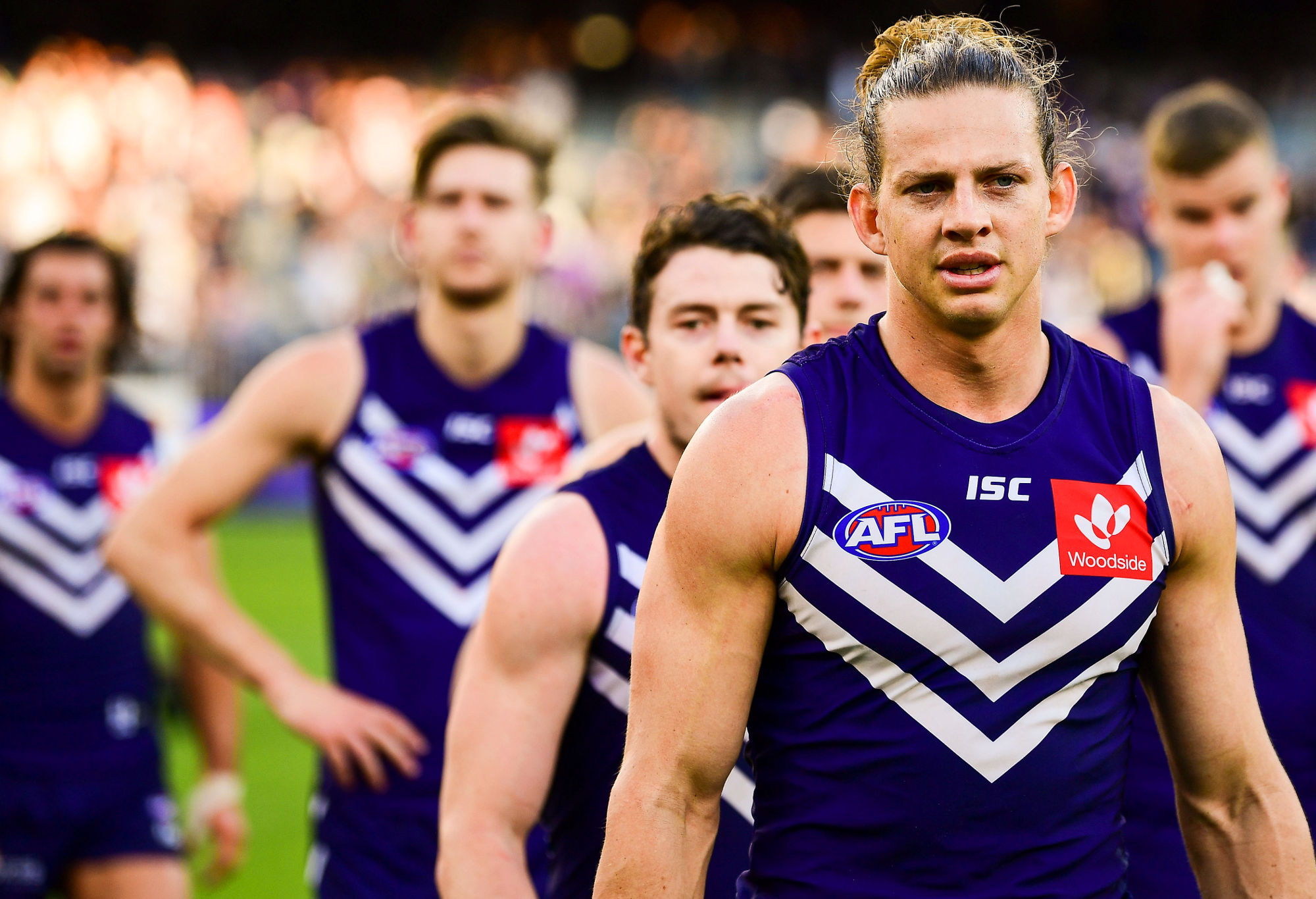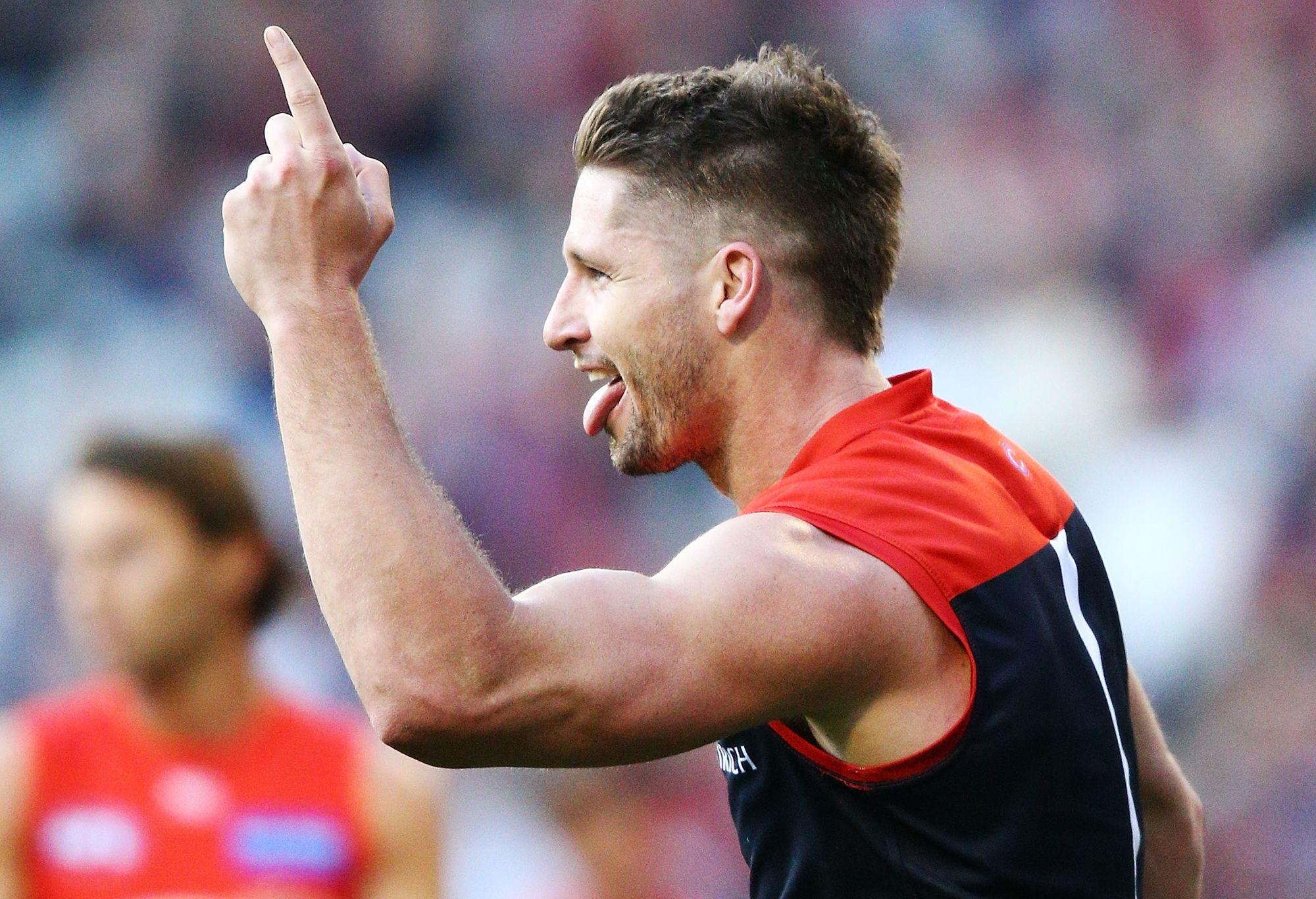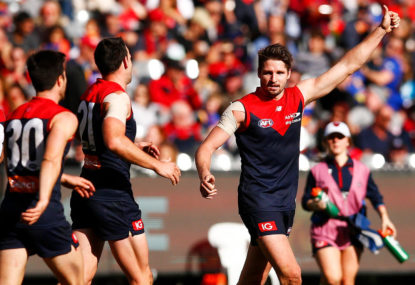I wrote an article early on in the trade period criticising Freo for their stance in the Jesse Hogan negotiations.
I’m glad they saw sense and reconsidered, because with Hogan’s acquisition, they have the heir apparent to former captain Matthew Pavlich they’ve been craving since the former skipper’s retirement in 2016.
They gave in to Melbourne’s demand for pick six to be part of the equation, but the pick swap they engineered with Port Adelaide – which saw Freo receive Port’s pick 11 in exchange for a bunch of later picks – was shrewd, allowing them to maintain a first-round presence and offsetting the loss of such a high pick.
The rest of their work in the trade period was solid, bringing in ruckman Rory Lobb, and depth midfielders Reece Conca and Travis Colyer. However, this was offset somewhat by the loss of star midfielder Lachie Neale.
Without him, an even heavier burden will fall on Nat Fyfe’s bandaged shoulders, and more pressure will likely be put on young midfielders Ed Langdon, Connor Blakely, Andrew Brayshaw, and Adam Cerra to develop quickly.

(Photo by Daniel Carson/AFL Media/Getty Images)
Freo’s list strategy since 2016 has been to invest as heavily as possible in the draft while trading in as many West Australians as possible. This year followed that script to a tee; what remains unclear is how well it is serving them.
The fact is, two years ago, Freo was in the same position – fresh off the back of a number of supposedly club-defining acquisitions who would almost certainly lift the club into finals contention.
In 2016, they acquired forwards Cam McCarthy and Shane Kersten, midfielder Brad Hill, and key defender Joel Hamling; last year, they brought in defender Nathan Wilson and small forward Brandon Matera, all native West Australians.
At the time, and on paper, these all looked to be solid ins – McCarthy and Kersten should have paired nicely to provide focal points in attack, with Matera providing the pressure. Hill should have joined his brother Stephen on a Subiaco/Optus Oval wing and become one of the most attacking wingmen combinations in the game. Hamling, fresh off a premiership with the Bulldogs, should have been the key defender they needed to give their younger players time to develop. Wilson should have maintained his high level to become one of the game’s best attacking defenders.
Sadly for Freo, only Wilson can be said to have definitively delivered on what was promised. The reality is that Kersten was apparently close to being delisted this year, McCarthy is evidently not a key forward and should be played as a third tall, Hill has been beset by injuries, and Hamling and Matera have been only serviceable.
Trading is both a science and an art, yet there is also a certain degree of luck involved. Freo would have been hoping for more from their recent acquisitions, and all have shown the capability to be decent players.
What is harder to quantify is how those players will gel together, and with the rest of the team; and how they will adapt to a new game plan. That’s the question that needs to be answered next year.
Based on recent years, it seems almost certain that having Hogan won’t automatically catapult the Dockers into finals contention next year. The fact Freo were unable to replace Neale is a bigger negative than acquiring Hogan is a positive, as losing Neale means that their midfield will likely struggle to deliver enough good quality ball into the forward line for their new recruit to be a game-changer in and of himself.

(Photo by Michael Dodge/Getty Images)
His presence will mean McCarthy is freed up to play the third-tall role he’s more suited to, which should result in more scoring, but that combination, as well as Lobb (when he shifts into the forward 50), will likely take a while to connect. Reece Conca could provide some run and pressure, but I don’t see either him or Colyer being more than handy depth players, given their injury histories.
It will be interesting to see whether having Hogan changes Freo’s game plan – Geelong midfielder Tim Kelly was reportedly adamant he didn’t want to go to Freo as he felt their game style wasn’t suited to his run-and-carry game style. Whether Freo play a faster, more direct style now they have Hogan as their focal point will be a key factor in determining their ladder position next year.

(Photo by Paul Kane/Getty Images)
Another will be the development of their younger players, which has been better than many have given them credit for. Coach Ross Lyon has defied his traditional methods to give game time to a bunch of inexperienced players, and many of them have repaid the faith. Darcy Tucker, Bailey Banfield, Langdon, Blakely, Brayshaw, and Cerra are fast becoming very good players, and Michael Apeness and Matt Taberner should benefit from having Hogan and Lobb as mentors.
While the Dockers look likely to remain in a similar ladder position next year, they’re well placed to reap the rewards of their recent trading spree and draft bounty in around two to three years.
By that stage, the core of their team will be West Australians, negating the dreaded ‘go home’ factor, and they should have shown enough to convince star Victorians Cerra and Brayshaw to stay. If they can get their game plan right, connectivity between the players should result, leading to the on-field success they’ve been searching for.
































































































